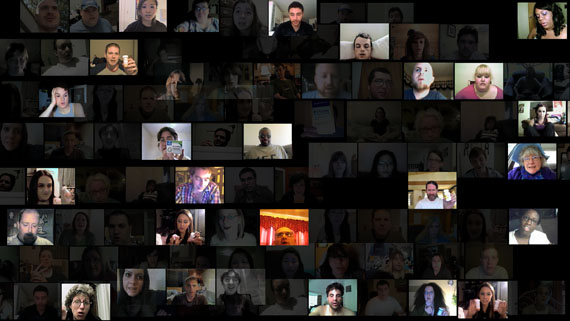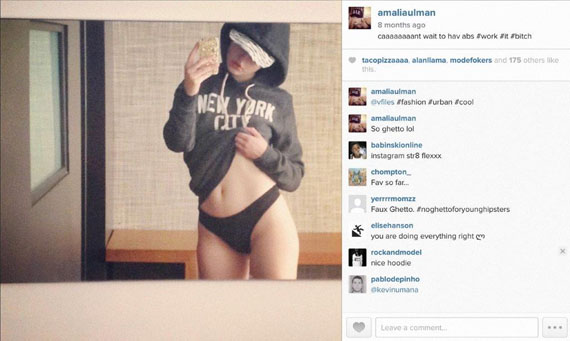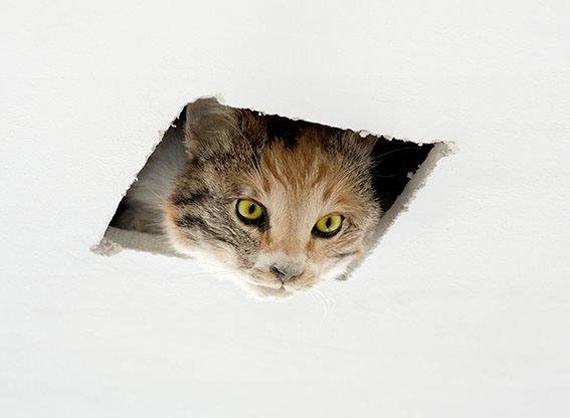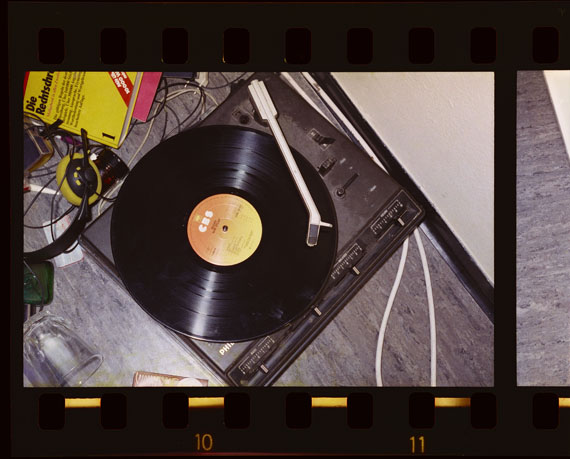
© Arwed Messmer, unter Verwendung einer Fotografie des Landesarchiv Baden-Württemberg
Biennale für aktuelle Fotografie 2017
Farewell Photography
Rosa Barba » Natalie Bookchin » Kilian Breier » Françoise & Daniel Cartier » Willem de Rooij » Harun Farocki » LaToya Ruby Frazier » Arno Gisinger » Philipp Goldbach » Simon Gush » John Heartfield » Alfredo Jaar » Sven Johne » Katia Kameli » Barbara Kasten » Jochen Lempert » Helmar Lerski » Etienne-Jules Marey » Eva & Franco Mattes » Arwed Messmer » Peter Miller (*1978) » Naeem Mohaiemem » Daidō Moriyama » Óscar Muñoz » Zanele Muholi » Charles Nègre » Floris Neusüss » Barbara Probst » Ed Ruscha » Joachim Schmid » Mark Soo » Andrzej Steinbach » Sebastian Stumpf » Wolfgang Tillmans » Amalia Ulman » Marianne Wex » Andrew Norman Wilson » & others
Festival: 9 Sep – 5 Nov 2017
Fri 8 Sep 19:00
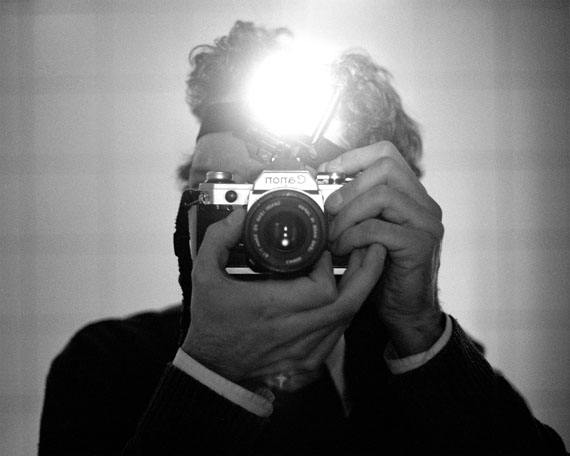
Biennale für aktuelle Fotografie
"Farewell Photography"
Duration: 9 September – 5 November, 2017
Opening: Friday, 8 September, 7 p.m.
The first Biennale für aktuelle Fotografie, which will be on show from 9 September 2017 in Mannheim, Ludwigshafen and Heidelberg, takes its leave from photography as it has been known hitherto. Under the title “Farewell Photography”, a six-member curator team will shed light on radical ways of handling images in the digital age and present an alternative look at photography’s history. The Biennale will be showing works by more than 60 international photographers and artists in seven chapters in seven museums of the region.
Applying their different perspectives, the six curators – in seven photographic fields – will question photography’s materiality and forms of use and, equally, its socio-political potential. To that end, contemporary positions will be mirrored in historical images and image collections and likewise in regional photography archives. Commissioned works for the Biennale will be assigned to artists who react to the local socio-political conditions and milieus. The exhibitions will feature encounters between historical glass plates and digital images, photo albums of migrant families and works by international participants, artistic positions and visual press material, installations in the museum space and interventions in the urban space. At the same time, new participation formats will play an important role – via exhibits that include public interventions, the involvement of local social groups in artistic production, or open-access educational and event formats.
"Farewell Photography" consists of seven exhibition chapters: At the Wilhelm-Hack-Museum in Ludwigshafen, the fracture points in the transition from analogue to digital photography will be up for discussion. In a second show at the same location, the focus lies on the performative potential of new images, away from the classic paper print. The exhibition at Sammlung Prinzhorn in Heidelberg revolves around the moment of getting photographed and the associated dialogue between photographer and picture protagonist. A small bundle of patient photographs from the Prinzhorn collection and psychology educational books from the first half of the 20th century form the exhibition’s basis. At the Heidelberger Kunstverein there will be an analysis of the role of the photographic image in political processes. Photography’s social potential to initiate turmoil and revolt is opposed by the immobilization of trends by means of images. At the Kunstverein Ludwigshafen, the theme will be the connection between globality, economy and photography. The concepts work and migration determine what photographs are shown from private and public archives, alongside other positions by contemporary artists. What a photograph gives away regarding the attitude of the authors behind the camera is put up for discussion at Zephyr in Mannheim. Images with varying function of identical events – news images, police snapshots, private pictures – will be contrasted with one another. Private dealing with images is the theme at Port25 in Mannheim. On account of its easy availability, photography has always been a popular medium of social exchange – the exhibition questions images’ dissemination paths today and what, if anything, is still being conveyed.
In addition, the photographic stock of Kunsthalle Mannheim is the source for a new work by Arno Gisinger. The glass plate archive comprising more than 7000 images – primarily art reproductions, exhibition documents and architecture photography from the museum’s founding in 1907 into the early 1960s – is the institution’s visual memory and was previously closed to visitors. It illustrates the museum’s exhibition policy, which has been characterized by political upheavals, as much as its extraordinary history, which Arno Gisinger will transfer into the public space and thus into a contemporary perceptual context. The glass plate negatives are photographically interpreted on the light table, montaged to create new narratives, and projected in the interior of the Mannheim Water Tower. For the duration of the biennial the city’s historical landmark will become a panoptic image medium.
In 2017 the internationally renowned Fotofestival Mannheim-Ludwigshafen-Heidelberg will be renamed as the Biennale für aktuelle Fotografie. Alongside BASF as Premium Sponsor, as an additional principal patron of the 2017 edition the German Federal Cultural Foundation will be making a considerable contribution to establishing the new Biennale.�
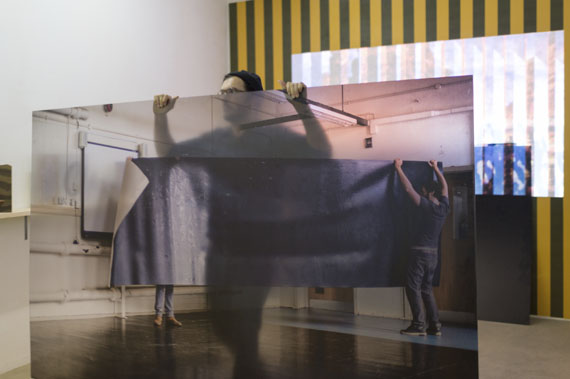
Biennale für aktuelle Fotografie
"Farewell Photography"
Laufzeit: 9. September bis 5. November 2017
Eröffnung: Freitag, 8. September
Die erste "Biennale für aktuelle Fotografie", die ab dem 9. September 2017 in Mannheim, Ludwigshafen und Heidelberg zu sehen sein wird, verabschiedet sich von der Fotografie, wie sie bisher bekannt ist. Unter dem Titel "Farewell Photography" beleuchtet ein sechsköpfiges Kuratorenteam um Florian Ebner und Christin Müller, Fabian Knierim, Boaz Levin, Kerstin Meincke und Kathrin Schönegg einen sich radikal verändernden Umgang mit Bildern im digitalen Zeitalter und präsentiert einen anderen Blick auf die Geschichte der Fotografie. In sieben Kapiteln, in sieben Häusern der Region, zeigt die Biennale Arbeiten von mehr als 60 internationalen Fotografinnen und Fotografen, Künstlerinnen und Künstlern.
Mit ihren unterschiedlichen Perspektiven fragen die sechs Kuratorinnen und Kuratoren in sieben Themenfeldern nach der Materialität und den Gebrauchsweisen, ebenso wie nach dem gesellschaftspolitischen Potenzial der Fotografie. Hierfür spiegeln sich zeitgenössische Positionen in historischen Bildern und Bildersammlungen, ebenso wie in regionalen Fotoarchiven. Auftragsarbeiten werden für die Biennale an Künstlerinnen und Künstler vergeben, die auf die lokalen gesellschaftspolitischen Bedingungen und Milieus reagieren. In den Ausstellungen treffen historische Glasplatten auf digitale Bilder, fotografische Alben von Migrantenfamilien auf Arbeiten internationaler Akteure, künstlerische Positionen auf journalistisches Bildmaterial, Installationen im Museumsraum auf Interventionen im Stadtraum. Zugleich werden neue Formate der Partizipation eine wichtige Rolle spielen – über Exponate, die Publikumsinterventionen einschließen, den Einbezug lokaler Gesellschaftsgruppen in die künstlerische Produktion oder offene Vermittlungs- und Veranstaltungsformate.
"Farewell Photography" besteht aus sieben Ausstellungskapiteln: Im Wilhelm-Hack-Museum in Ludwigshafen stehen die Bruchstellen im Übergang von analoger zu digitaler Fotografie zur Diskussion. In einer zweiten Schau am selben Ort liegt der Fokus auf dem performativen Potenzial der neuen Bilder, abseits des klassischen Papierabzugs. Die Ausstellung in der Sammlung Prinzhorn in Heidelberg kreist um den Moment des Fotografiertwerdens und den damit verbundenen Dialog zwischen Fotograf und Bildprotagonist. Ausgangspunkt sind ein kleines Konvolut von Patientenfotografien aus der Sammlung und Lehrbücher der Psychologie aus der ersten Hälfte des 20. Jahrhunderts. Im Heidelberger Kunstverein findet eine Auseinandersetzung mit der Rolle des fotografischen Bildes in politischen Prozessen statt. Das gesellschaftliche Potenzial von Fotografie, Aufruhr und Revolte zu initiieren, steht der Lähmung von Entwicklungen durch Bilder gegenüber. Im Kunstverein Ludwigshafen wird der Zusammenhang zwischen Globalität, Ökonomie und Fotografie thematisiert. Die Begriffe Arbeit und Migration bestimmen die gezeigten Fotografien aus privaten und öffentlichen Archiven neben weiteren Positionen von zeitgenössischen Künstlern. Was eine Fotografie über die Haltung der Autoren hinter der Kamera verrät, wird im Zephyr in Mannheim zur Diskussion gestellt. Bilder mit unterschiedlicher Funktion von gleichen Ereignissen – Nachrichtenbilder, Polizeiaufnahmen, private Bilder – werden einander gegenüber gestellt. Der private Umgang mit Bildern ist Thema im Port25 in Mannheim. Aufgrund ihrer leichten Verfügbarkeit war die Fotografie stets populäres Medium sozialen Austauschs – die Ausstellung fragt nach heutigen Verbreitungswegen der Bilder und was überhaupt in Umlauf gebracht wird und mit welcher Motivation.
Der fotografische Bestand der Kunsthalle Mannheim ist darüber hinaus Ausgangspunkt für eine neue Arbeit von Arno Gisinger. Das über 7000 Bilder umfassende Glasplatten-Archiv – in erster Linie Kunstreproduktionen, Ausstellungsdokumentationen und Architekturfotografie von der Museumsgründung 1907 bis in die frühen 1960er Jahre – ist das bisher für Besucher unzugängliche visuelle Gedächtnis der Institution. Es bildet die von politischen Umbrüchen gezeichnete Ausstellungspolitik ebenso wie die außergewöhnliche Geschichte des Museums ab, die Arno Gisinger in den öffentlichen Raum und so in einen zeitgenössischen Wahrnehmungskontext übertragen wird. Die Glasplatten-Negative werden auf dem Leuchttisch fotografisch interpretiert, zu neuen Geschichten montiert und im Inneren des Mannheimer Wasserturms projiziert. Das historische Wahrzeichen der Stadt wird für die Dauer der Biennale zu einem panoptischen Bildträger.
Mit der Ausgabe 2017 wird die als Fotofestival Mannheim-Ludwigshafen-Heidelberg international bekannt gewordene Ausstellung zur "Biennale für aktuelle Fotografie" umgewidmet. Neben der BASF als Premiumsponsor trägt die Kulturstiftung des Bundes als zusätzlicher Hauptförderer der Ausgabe 2017 zur Etablierung der neuen Biennale bei.
�
